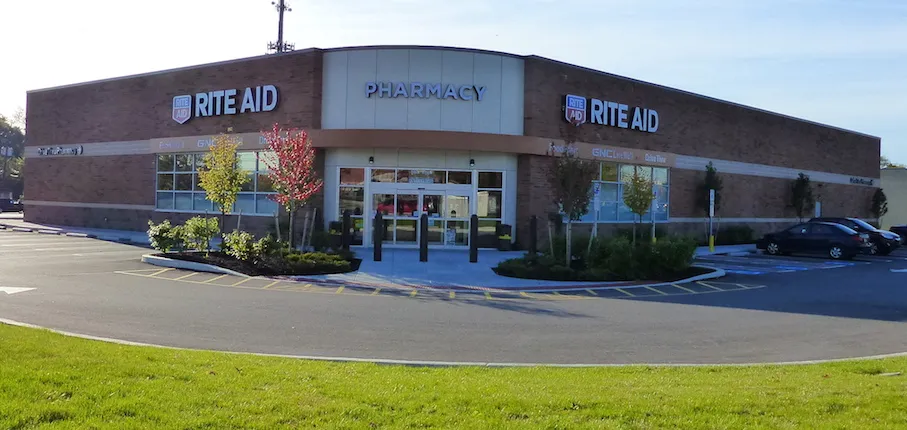CAMP HILL, Pa. — Rite Aid Corp. posted fiscal 2016 third-quarter adjusted earnings in line with Wall Street estimates and announced a special shareholders meeting to vote on its $17.2 billion deal to be acquired by Walgreens Boots Alliance Inc.
Rite Aid said Thursday that for the third quarter ended Nov. 28, net income totaled $59.5 million, or 6 cents per diluted share, compared with $104.8 million, or 10 cents per diluted share, a year earlier. On average, analysts projected Rite Aid’s adjusted earnings per share at 6 cents, with estimates ranging from a low of 4 cents to a high of 7 cents, according to Thomson Financial.
The decline in net earnings stemmed from lower income tax expense in the prior year due to an adjustment to the company’s deferred tax valuation allowance of $45.9 million, an increase in interest and amortization expense related to the purchase of EnvisionRx and transaction expenses of $9.8 million related to the pending merger with Walgreens Boots Alliance, according to Rite Aid. These items were partially offset by a gain in adjusted EBITDA (earnings before interest, taxes, depreciation and amortization) and a prior-year loss on debt retirement, the company added.
Adjusted EBITDA in the third quarter rose to $373.2 million, or 4.6% of revenue, from $332.8 million, or 5% of revenue, in the year-ago period. Rite Aid attributed the increase to $33.9 million of adjusted EBITDA from its pharmacy services segment, formed with the closing of the Envision acquisition, and a $6.5 million gain in retail pharmacy segment adjusted EBITDA. The company said the retail pharmacy increase was fueled by front-end gross profit growth and continued cost control, partially offset by a decrease in pharmacy gross profit.
John Standley
On the sales side, fiscal 2016 third-quarter revenue totaled $8.2 billion, up 21.8% from $6.7 billion a year earlier. The gain reflects the addition of $1.5 billion in sales from the pharmacy services segment and a 0.8% sales increase in the retail pharmacy segment, driven mainly by a rise in same-store sales, Rite Aid said.
For the quarter, same-store sales edged up 0.9%, including gains of 0.3% in the front end and 1.2% in the pharmacy, the latter reflecting a negative impact of 252 basis points from introductions of new generic drugs, according to Rite Aid.
Prescription count in comparable stores was up 0.2% year over year. Rite Aid said prescription sales represented 69.9% of total drug store sales in the quarter.
During the third quarter, the company relocated five stores and remodeled 96 stores, bringing the total number of Wellness Stores to 1,948. In addition, two stores were acquired and three stores were closed. As of Nov. 28, Rite Aid had 4,560 drug stores overall. The company also opened five RediClinics in the quarter, raising the total clinic count to 75.
“We are pleased with our results for the third quarter, which reflect growth in revenue, same-store sales and adjusted EBITDA along with positive, significant contributions from our new pharmacy services segment,” Rite Aid chairman and chief executive officer John Standley said in a statement. “We also continued making tremendous progress in strengthening our retail health care offering by converting additional stores to our Wellness format. We thank our dedicated Rite Aid team for their continued hard work in executing our key initiatives and serving our valued customers.”
On Feb. 4, Rite Aid plans to hold a special meeting of stockholder to vote on the proposed agreement to be acquired by Walgreens Boots Alliance (WBA), which was announced on Oct. 27. Under the deal, WBA will buy Rite Aid for more than $9 billion in cash, or $9 per share, and assume more than $7 billion in net debt. With completion of the merger, Rite Aid is slated to become a wholly owned direct subsidiary of WBA and, initially, to operate under its current brand name.
The board of both companies have approved the transaction, which is expected to be finalized by the second half of calendar 2016, pending the Rite Aid shareholder vote, regulatory approvals and other customary closing conditions.
Due to the pending acquisition deal, Rite Aid did not hold a conference call with analysts to discuss its third-quarter results. The company also said that, going forward, it doesn’t plan further updates to its fiscal 2016 guidance or to provide guidance for fiscal 2017.
Rite Aid said it “remains comfortable” with the fiscal 2016 guidance it gave when reporting second-quarter results on Sept. 17. That outlook — which does not reflect the WBA deal — projected full-year net income at $125 million to $195 million, or 12 cents to 19 cents per diluted share, and revenue of $30.8 billion to $31.1 billion, with retail drug store sales of $26.7 billion to $27 billion. Same-store sales are forecast to rise 1.5% to 2.5%. Adjusted EBITDA is expected to be $1.36 billion to $1.44 billion. Capital expenditures are estimated at $665 million.
On average, analysts forecast Rite Aid’s fiscal 2016 adjusted EPS at 17 cents, with projections running from a low of 15 cents to a high of 20 cents, according to Thomson Financial.









